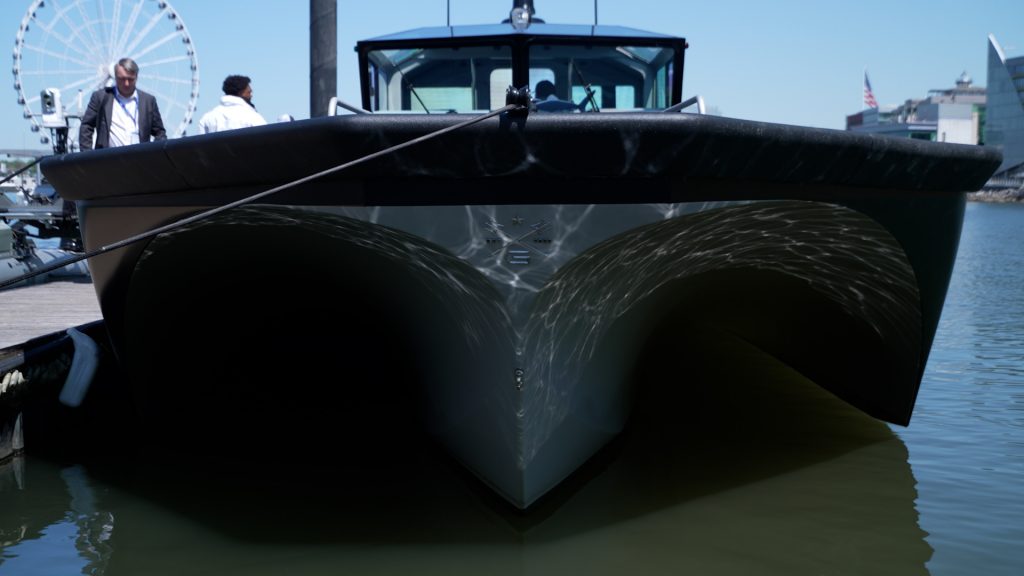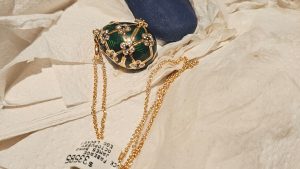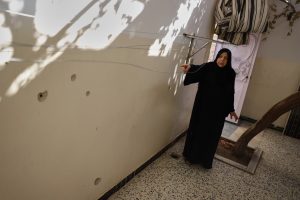The Minerva: Where civilian and military technology collide on the water
Ella Greene April 23, 2025 0
Military innovations have a history of making their way into civilian life, including GPS, EpiPens and night vision technology. While military technology often transitions to civilian use, civilian tech adapted by the military is less frequently discussed. For several years, a Michigan-based company with a proven track record in elite boat racing has worked to bring its innovations to American warfighters. This week’s debrief focuses on this effort.
It was a picture-perfect day on the Potomac when the crew from Ghostworks Marine set out.
“So we are driving around right now on the Minerva, maneuvering on the Minerva as it were, pulling a hard right turn right now, going about 37, 30 knots on that turn right there,” said Weapons and Warfare host Ryan Robertson. “Very tight, very maneuverable. The speed that this craft is able to maintain through those different maneuvers without putting a lot of strain on the operator’s body, or whoever is in the cab or body, means that you can run this boat for hours on end.”
What is the Minerva?
At a little more than 46 feet long, the newest M-Hull vessel from the Holland, Michigan firm cuts an impressive figure on the water. However, it is what the M40 can do on the job that really gets attention.
“So this boat carries 750 gallons of fuel, about a 700-mile range, at a pretty healthy cruising speed and fully customizable,” Todd Meyer, a demo pilot, said. “She has a 15-foot beam, so for the length, she carries substantially more than any other coach. She is around 16,000 pounds with fuel, and she, you know, full displacement with gear. She is almost 30,000 pounds. So you have 13,000 pounds of payload capacity with range, which is pretty remarkable.”
“The simple answer to that is, well, it is easy to maintain,” Kerschbaumer said. “It is actually really easy to repair, and it is even more sustainable than every other thing that we are using right now in the maritime space. So carbon has a really long shelf life. It is thermal resistant, so it does not expand and contract the same way that metal does. So that makes it a little bit easier when you are putting it through its paces and it is experiencing swift temperature changes.”
Ghostworks said the Minerva was manufactured at unprecedented speed, going from design to completed sea trials in six months.
“So we come from the high-performance racing space,” Kerschbaumer added. “You know, we are misfits and mavericks. So we come from that world that has been using carbon in maritime for over 40 years, and what that has allowed us to do is really push the envelope.”
What about performance and fixes?
Engineers pushing the envelope might seem like something military types are comfortable with, but it turns out they need some convincing.
“We get asked all the time, ‘What happens if the boat cracks? What happens if you get a hole?’ We send every craft out with a vacuum-sealed pack that you can just put on the boat, wet or dry,” Kerschbaumer said. “It will make it safe so that you can bring it back in, and then we just carve out, put a new piece in, reinstate it just the same way that we would do with metal. It is just a different process.”
A process we got to see firsthand thanks to a quick demonstration with Ian Faber.
“You can tune resins into different speeds,” Faber said. “You can get them down to 20 minutes, and that is more of a polyester vinyl ester product. What we use is epoxy, so you have a couple of hours before it is set. And again, there are different formulas to achieve different manufacturing.”
Is the Minerva a good choice?
The boat has good bones, but it is really out on the water where the Minerva makes its best case as a potential option for sailors, marines and special operators — basically any squad that needs to get in and out quickly, while also dealing with adversaries.
“Well, just the fact that you can maintain your line of sight, your parallel to the horizon the whole time throughout the turn,” said David Wright, tactical consultant and retired USN. “Means that when you come off and you list and decide it does not take your gun line up and into the air, it allows you to maintain if you were engaging a threat, it allows you to maintain eyes on that threat so that you can responsibly and actively and effectively engage that threat, protect the force.”
The Minerva helps protect its occupants’ knees, back and joints. When on the water in the craft, the ride stays smooth. The pilot and crew are not subject to many of the forces endured by operators of monohull craft. Kerschbaumer sees this as a major selling point.
“The thing that is the most interesting that we hear from everybody when they get off, you do not feel like you are going fast,” Kerschbaumer stated. “When you are on her, you feel incredibly safe. And when she turns, she will turn on a dime, she will hug. You know, there is the old line from ‘Pretty Woman’ that corners like it is on rails. That is exactly what she does. So she makes you feel so strong in everything that you are doing, you never lose line of sight. So you can see 360 degrees around you, regardless of what type of maneuvers you are making.”
What’s next?
As for what is next for the M40, a Ghostworks executive told Weapons and Warfare that the company received lots of positive feedback about the ride quality, low slamming, flat turns and the versatility of the modular platform. They added that they have interest from several naval forces, the Coast Guard, some border patrol units, as well as some commercial applications that are very excited about how easily Ghostworks can tailor the vessels to their needs.
Access the full Weapons and Warfare episode here.
Access all Weapons and Warfare podcast episodes here.
Related Stories
Ella Rae Greene, Editor In Chief
Ella Greene
Ella and the staff at Clear Media Project (CMP) curate these articles.
Unless otherwise noted CMP does not write these articles.
The views, thoughts, and opinions expressed in the articles published on this blog belong solely to the original authors and do not necessarily reflect the views of the blog owner. The blog owner does not claim ownership of the content shared by contributors and is not responsible for any inaccuracies, errors, or omissions.
All rights and credits goes to its rightful owners. No Copyright Infringement is intended. If you believe any content infringes on your rights, please contact us for review and potential removal.





